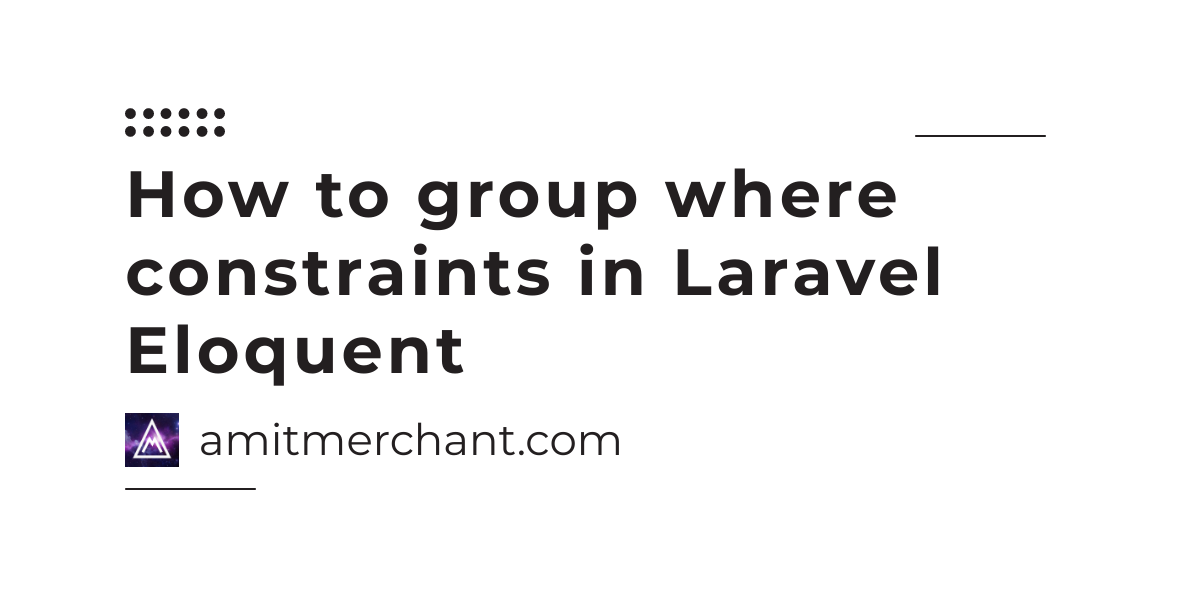
In cases where you're using data sharding to distribute your data across multiple databases, you might have different models that map to different shards. By overriding the $connection property, you can easily manage these connections and ensure your models are interacting with the appropriate databases. If your application uses multiple database connections (e.g., MySQL, PostgreSQL, or different instances of the same database), you may want to specify which connection should be used for a particular model. Here are a few use cases where you might find it especially handy: 1. Overriding the database connection attribute for individual models in Laravel can be a powerful technique. Tip given by Override Connection Attribute in Models

$ this-> direction = SortDirections:: Desc,įn () => $query-> orderByDesc( 'avg_rating')įn () => $query-> orderBy( 'avg_rating'), > join( 'product_ratings', 'products.id', '=', 'product_ratings.product_id') > selectRaw( 'AVG(product_ratings.rating) AS avg_rating') Let's write a query for getting today created active and inactive products So, most of the time we use query() method, Typically, we need to query multiple time from a filtered query.
Override Connection Attribute in Models. Chain conditional clauses to the query without writing if-else statements. Hiding columns in select all statements. Return the primary keys from models collection. Make use of the value method on the query builder. Check for specific model was created or found. Directly convert created_at date to human readable format. When searching for the first record, you can perform some actions. Another way to do accessors and mutators. Get single column's value from the first result. Remove several global scopes from query. Order based on a related model's average or count. Retrieve the Query Builder after filtering the results. Prunable trait to automatically remove models from your database. The findOrFail method also accepts a list of ids. Periodic cleaning of models from obsolete records. Updating the model without dispatching events. The crossJoinSub method of the query constructor. Get original attributes after mutating an Eloquent record. Laravel eloquent update return value how to#
How to prevent “property of non-object” error.There are two common ways of determining if a table is empty in Laravel.Trait that you want to add to a few Models to call their boot() method automatically.Using the doesntExist() method in Laravel.
 Fill a column automatically while you persist data to the database. Change Format Of Created_at and Updated_at. Automatic Column Value When Creating Records. Load data completed between two timestamps. Load data faster when the targeted value is an integer. New rawValue() method since Laravel 9.37. Eloquent scopes inside of other relationships. Perform operation without modifying updated_at field. Small cheat-sheet for using Full-Text Search with Laravel on MySQL. Remember to use bindings in your raw queries. ⬆️ Go to main menu ➡️ Next (Models Relations)
Fill a column automatically while you persist data to the database. Change Format Of Created_at and Updated_at. Automatic Column Value When Creating Records. Load data completed between two timestamps. Load data faster when the targeted value is an integer. New rawValue() method since Laravel 9.37. Eloquent scopes inside of other relationships. Perform operation without modifying updated_at field. Small cheat-sheet for using Full-Text Search with Laravel on MySQL. Remember to use bindings in your raw queries. ⬆️ Go to main menu ➡️ Next (Models Relations)






 0 kommentar(er)
0 kommentar(er)
